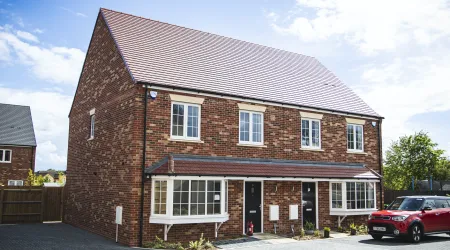Obtaining a mortgage for a property with issues

I have had a lot of friends and friends of friends ask for information about purchasing a property that has a few to a lot of issues. Often it is not a case of someone looking for a development project, just a couple that found their ideal house and if they want it will have to spend a lot of time and money fixing it.
When it comes to mortgages, what appetite do lenders have for properties that need work? As always, it depends, mainly on the work required.
I am not looking at developers here, people that want to buy a property, do it up and sell. Only those that are buying with the intention to use it as their home.
What lenders will not lend against
For the most part, lenders rely on the opinion of the valuer. There are commonly two things that cause lenders to walk away from.
- The valuer states that the property is uninhabitable.
- The valuer states the property is valued at £0 in its current condition.
For a standard mortgage on a property being purchased as the borrower's main home the property must be in reasonable condition, have a value and be habitable. These are the basics of mortgage lending.
What lenders will lend against
The opposite of above there is two basic requirements a property must-have. These are non-negotiable elements that all lenders looking at a standard mortgage lend will want.
- The property must be habitable.
- The property must have a value.
So providing it is a property you could move into on the day the mortgage completes and the value is of a sufficiently high level to meet your mortgage needs, deposit and affordability then we have the right starting position.
The question is then around what is wrong with the property and whether the lender will insist on a retention and/or conditions on the mortgage offer stating what you must do and by when in relation to repairs.
What could be wrong with the property? Here are some indications, not exhaustive though.
- Needs a new roof
- Complete interior refit
- Dry rot, Wet rot or damp repairs
- Outdated electrics
- No heating or existing heating needs replaced
Of course, one of these on its own may not seem too bad but two or all of them together is entirely different.
Mortgage Retention
Depending on the valuation report it is often the case that the value of the property is sufficient to cover the mortgage you want. But that may not be enough for a lender. For example, if the roof is not replaced in a timely manner it could leak and cause wider damage to the property.
If the lender feels, often directed by the valuer that the property needs work done to prevent further damage which may affect the value then a mortgage retention may be required.
Suppose the roof needs replaced and failure to do so may or will cause additional damage to the property,
the lender will insist the borrower replaces the roof. Again the valuer will often place an estimated figure on the work. In this case, let's say £5,000.
What then happens is that the lender will allow the mortgage to proceed but from the mortgage proceeds, they will withhold £5,000 and state that the roof must be replaced within a stated period of time. Say 6 months following completion of the mortgage.
This means the borrower must have that £5,000 available at the point the mortgage completes. When the solicitor goes to pay the person selling the property they will be £5,000 short.
Getting the retention back
Once the property is in the possession of the borrower they can immediately instruct a builder to replace the roof. As soon as that is completed, evidence can be sent to the lender and they will release the £5,000 to then pay the builder.
Property Development Finance
There are options for situations where a high street lender considers the work required too much. That is where development finance comes in.
Development finance is not for everyone. It generally comes with conditions most home buyers can't meet or in many cases don't want to deal with. This type of finance costs more and is restricted to a short period, the main elements are:
- Length of finance is limited to however long the works take.
- Cost is much higher than a standard mortgage product.
- A lower LTV is likely to be offered so a higher deposit will be needed.
- The cost of the repairs plus perhaps a further 10% for overruns will need to be evidenced.
Going down the development finance requires focus and some experience in project management. The penalties can be high for not bringing the project in on time leading to being unable to repay the loan.
At some point the loan needs to be repaid, which usually comes from being ready to obtain a mortgage from a high street lender who will lend on the completed property and those mortgage funds will then repay the development finance company.
As you can appreciate this is not something for the inexperienced and a lot of ducks needs to be in a row if going down this route.
Lee Wisener, CeMAP, CeRER, CeFAP
Having worked in the mortgage industry for over 20 years I have always wanted to build a website dedicated to the subject. Also being a geek when it comes to the internet all I needed was time and I could both build the site from scratch and fill it with content. This is it!

<< Newer Post
Bank of England considers reducing mortgage stress ratesOlder Post >>
Mortgage Stress rates after Interest rate increase